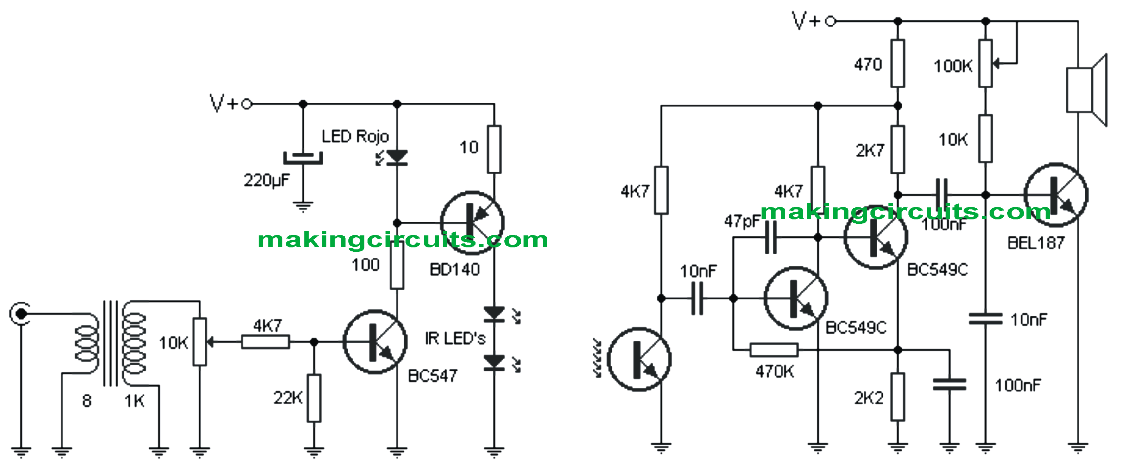When somebody thinks about a simple wireless headphone circuit there are a few options that are generally visualized. The simplest of these options is incorporating IR or infrared light through which the audio signal to be transmitted is modulated and processed accordingly, while on the receiver side the signal is again demodulated and amplified appropriately for the achieving a successful wireless audio transfer.

As shown in the image of the proposed simple wireless headphone circuit, the transmitter section looks extremely easy to build. The input small step-up transformer is wired as an impedance matching adapter, it has a low impedance winding which may be seen joined in parallel with the speaker of the TV or radio or whichever audio source that needs to be transmitted wirelessly.
The output from the transformer is further amplified by the two transistors and finally fed to a couple of series connected IR diodes
These infrared diodes are standard types and in fact any typical can be applied. We can also see a 10 ohm series resistor for controlling the current through the IR diodes and this resistor must be rated at 1w. This transmitter circuit works with a 9V supply which may be acquired from the audio source's power supply or through a separate 9V DC to DC adapter
The receiver for the wireless headphone circuit works in the following manner:
The detected IR or the infrared modulated beam from the phototransistor, is first preamplified and then amplified by the BC549C transistors, which is subsequently reinforced with extra power for enabling headphone speaker to operate and reproduce the received sound data.
This receiver too identically, like the transmitter operates using a 9V supply, however since the headphone needs to be wireless and the person able to walk with it, the supply needs to come from a battery. For this a few AAA cells wired up in series can be used to achieve the required 9V for the wireless headphone.
Remember that for the audio which is being transmitted ought to be within visual straight line between the transmitter and the receiver circuits because here we are dealing with IR concept and not an RF concept. Therefore if the two counterparts Tx, Rx are not within the line, noise may be introduced into the receiver causing distortion into the sound output.
In case you may feel that the range needs to be upgraded, It may be possible by increasing the range of the transmitter by enhancing the number of transistors for BD140 and/or by including more numbers of IR diodes in the series.
Leave a Reply